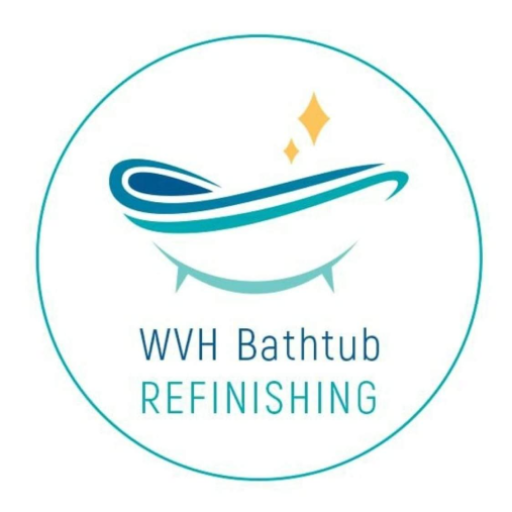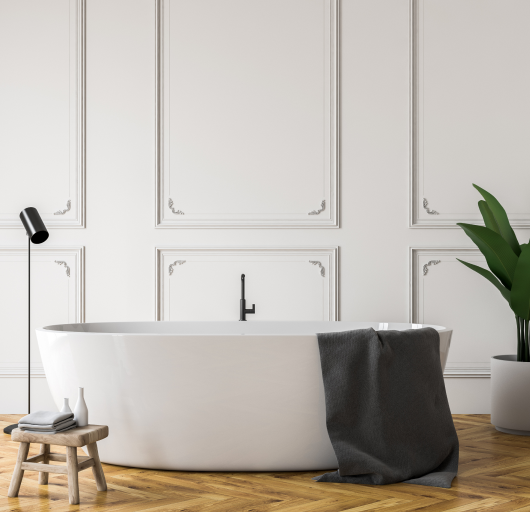Bathtub Refinishing Safety: Health and Environmental Considerations
Wondering if bathtub refinishing is safe for your family and the planet? Modern reglazing methods offer low-toxicity, eco-conscious options that preserve indoor air quality while restoring your tub’s shine.
Is bathtub refinishing safe for my family and pets?
Yes, bathtub refinishing is generally safe for your family and pets, provided proper precautions are followed. The refinishing process involves the use of chemicals that should not be inhaled or touched until they have fully cured. It's important to ventilate the area well and keep children and pets out of the bathroom until the work is completed and the chemicals have dried.
Are the chemicals used in bathtub refinishing toxic?
The chemicals used in bathtub refinishing can be toxic if not handled properly. These chemicals may emit fumes during application, so it’s essential to ensure proper ventilation during the process. Most refinishing professionals take precautions to minimize exposure, and many offer low-VOC (volatile organic compounds) options that are less harmful to health.
Can I use my refinished bathtub immediately after the process is completed?
No, you should not use your refinished bathtub immediately after the process is completed. It typically takes 24 to 48 hours for the refinishing chemicals to fully cure and harden. During this time, avoid using the bathtub to allow the finish to set properly and prevent damage to the surface.
How does the refinishing process affect the air quality in my home?
The refinishing process can affect the air quality in your home due to the fumes emitted from the chemicals used. It is important to ensure proper ventilation in the area during and after the application. Most professional refinishing contractors will take precautions to limit exposure, and many now use low-VOC materials that reduce the impact on indoor air quality.
Is it safe to refinish a bathtub if I’m pregnant or have respiratory issues?
If you are pregnant or have respiratory issues, it’s best to avoid being in the area during the refinishing process. The chemicals used can emit fumes that may be harmful, so make sure the area is well-ventilated, or consider scheduling the work when you can avoid exposure. Always consult with your doctor if you have concerns about potential exposure.
How long does the smell from bathtub reglazing last?
The smell from bathtub reglazing typically lasts for a few hours to a couple of days, depending on the type of chemicals used. Ensuring good ventilation during the process can help dissipate the odor more quickly. Most contractors will recommend keeping the bathroom well-ventilated and closed off from the rest of the home until the fumes have dissipated.
Can refinishing a bathtub affect indoor air quality?
Yes, refinishing a bathtub can affect indoor air quality temporarily due to the fumes released from the chemicals used. However, most contractors now offer low-VOC options that help reduce the impact. Proper ventilation during the refinishing process is key to minimizing the effect on indoor air quality.
Is bathtub refinishing safe in homes with small children?
Bathtub refinishing is generally safe in homes with small children as long as the area is kept well-ventilated and children are kept out of the bathroom until the chemicals have fully cured. The refinishing process usually takes 24-48 hours, during which the area should remain off-limits to children.
Are there eco-friendly refinishing options available?
Yes, there are eco-friendly refinishing options available that use low-VOC and non-toxic chemicals. Many contractors now offer these green alternatives to help minimize the impact on both indoor air quality and the environment. Be sure to ask your contractor about eco-friendly products when scheduling your refinishing service.
How can I ensure that the refinishing process is done with safe, non-toxic products?
To ensure the refinishing process is done with safe, non-toxic products, ask the contractor about the specific materials and chemicals they use. Look for products that are labeled as low-VOC, non-toxic, and eco-friendly. You can also inquire about the safety certifications and health standards of the refinishing materials used.
Is the bathtub refinishing process environmentally friendly?
Bathtub refinishing is generally more environmentally friendly than replacement, as it reduces the need to dispose of old bathtubs, which can take up valuable landfill space. Additionally, refinishing uses fewer resources compared to manufacturing and installing a new tub, making it a more sustainable option.
How can I make sure the refinishing company I hire follows safety protocols?
To ensure that the refinishing company follows safety protocols, ask them about their safety measures, including ventilation systems, protective equipment, and precautions for handling chemicals. A reputable company will be transparent about the materials they use and will prioritize safety during the entire process.
What are the environmental benefits of bathtub reglazing over replacement?
The environmental benefits of bathtub reglazing include reducing waste, as you are not discarding an old tub and installing a new one. Reglazing also uses fewer resources than manufacturing a new bathtub, and it typically involves less energy use and fewer materials, making it a more sustainable option overall.
Do refinishing products contain volatile organic compounds (VOCs)?
Some refinishing products do contain volatile organic compounds (VOCs), which can be harmful to both health and the environment. However, many refinishing companies now offer low-VOC or VOC-free options that are safer and more environmentally friendly. It’s important to ask your contractor about the VOC content in the products they use.
How can I prevent exposure to harmful fumes during bathtub reglazing?
To prevent exposure to harmful fumes during bathtub reglazing, ensure that the area is properly ventilated. Open windows, use fans, and if possible, keep the bathroom door open. Avoid entering the bathroom during the application process and wait at least 24-48 hours for the fumes to dissipate before using the tub.
Are there any health risks related to inhaling fumes from refinishing products?
Yes, inhaling fumes from refinishing products can be harmful to your health, especially if exposure is prolonged. These fumes can irritate the eyes, skin, and respiratory system. To minimize risks, always ensure proper ventilation and stay out of the bathroom while the refinishing process is taking place until the area is safe.
Is it safe to use the bathroom during bathtub refinishing?
It is not safe to use the bathroom during the refinishing process, as the chemicals involved can be harmful. Stay out of the bathroom while the refinishing work is being done, and allow the area to ventilate properly before using it again. Most contractors will recommend waiting at least 24-48 hours for the chemicals to cure and the fumes to dissipate.
How do I ensure that the refinishing products used in my home are safe for the environment?
To ensure the refinishing products used in your home are safe for the environment, ask your contractor about the specific materials they use. Look for low-VOC, non-toxic, and eco-friendly refinishing products. You can also ask for certifications or product information that confirms the materials meet environmental safety standards.
Can refinishing a bathtub be harmful to the plumbing system?
No, refinishing a bathtub does not typically affect the plumbing system. The process focuses on the surface of the tub, and the plumbing remains unaffected unless there are pre-existing issues. However, it’s important to ensure that the refinishing process is done properly to avoid accidental damage to the tub or surrounding areas.
What steps do refinishing contractors take to reduce harmful emissions?
Reputable refinishing contractors typically use low-VOC or VOC-free materials to minimize harmful emissions. They also ensure proper ventilation during the refinishing process by using fans, opening windows, and using ventilation systems to direct fumes outside. Some companies also use air scrubbers to further reduce airborne pollutants.
Does refinishing a bathtub contribute to waste or pollution?
Refinishing a bathtub generally contributes less to waste and pollution compared to a full bathtub replacement. Instead of discarding an old tub, refinishing restores the existing one, reducing landfill waste. Additionally, refinishing requires fewer resources and energy than manufacturing and installing a new bathtub.
How does the refinishing process compare to a bathtub replacement in terms of sustainability?
Refinishing a bathtub is more sustainable than replacing it because it reduces the need for manufacturing a new tub and eliminates the need for disposal of the old one. Reglazing uses fewer resources, produces less waste, and has a smaller environmental footprint compared to full bathtub replacement, making it the more eco-friendly option.
Is bathtub reglazing safe for people with asthma or other respiratory conditions?
Bathtub reglazing can pose risks for people with asthma or respiratory conditions due to the fumes emitted from the chemicals used in the process. It’s important to ensure proper ventilation and avoid exposure during the application. People with respiratory conditions should remain out of the area until the chemicals have fully cured and the fumes have dissipated.
Can the refinishing process be done in a way that minimizes exposure to chemicals?
Yes, refinishing contractors can take steps to minimize exposure to chemicals by using low-VOC or VOC-free products, ensuring proper ventilation, and wearing protective gear. It’s important to work with a contractor who follows safety protocols to protect both the residents of the home and the environment.
Are the refinishing materials biodegradable?
Most refinishing materials, especially those used for surface coatings, are not biodegradable. However, many contractors offer more eco-friendly options with low environmental impact, including non-toxic and low-VOC materials. For environmentally-conscious consumers, it's recommended to ask for biodegradable or eco-friendly products when scheduling refinishing work.
What kind of ventilation is necessary during the refinishing process?
Proper ventilation is crucial during the refinishing process to ensure that fumes are safely expelled from the area. This can be done by opening windows, using fans, and, if possible, using an exhaust system to direct the fumes outside. Some contractors may also use air scrubbers to further reduce airborne pollutants.
Does bathtub reglazing help reduce the environmental footprint of home renovations?
Yes, bathtub reglazing helps reduce the environmental footprint of home renovations by reusing the existing tub and avoiding the need for new materials and disposal of old tubs. This not only reduces waste but also conserves resources and energy, making reglazing a more sustainable option compared to full bathtub replacement.
How can I minimize the environmental impact of refinishing a bathtub?
To minimize the environmental impact of refinishing a bathtub, you can choose contractors who use eco-friendly, low-VOC, and non-toxic products. Ask for water-based coatings instead of solvent-based options. Additionally, reglazing your bathtub is a more sustainable option than full replacement, as it reduces the need for new materials and decreases waste sent to landfills.
Can refinishing a bathtub reduce the amount of waste sent to landfills?
Yes, refinishing a bathtub helps reduce the amount of waste sent to landfills. Instead of disposing of an old tub and replacing it with a new one, reglazing restores the existing tub, which conserves resources and minimizes waste. This makes refinishing a more sustainable choice compared to full bathtub replacement.
Are there any specific safety measures to consider if the refinishing is done in a high-humidity area?
In high-humidity areas, refinishing requires extra precautions to ensure that the finish properly adheres and cures. Contractors should use dehumidifiers or fans to reduce moisture in the air and ensure the bathroom is well-ventilated. It’s important to allow ample curing time for the finish to set properly in these conditions, typically 48 hours or more, depending on the humidity levels.


